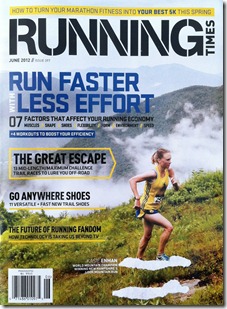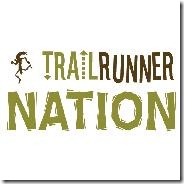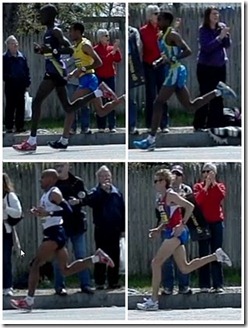 I wanted to alert you to an excerpt from my book, Tread Lightly: Form, Footwear, and the Quest for Injury-Free Running, that was published in the June 2012 issue of Running Times magazine (starting on page 26, with a great photo of my friend Mark Cucuzzella!).
I wanted to alert you to an excerpt from my book, Tread Lightly: Form, Footwear, and the Quest for Injury-Free Running, that was published in the June 2012 issue of Running Times magazine (starting on page 26, with a great photo of my friend Mark Cucuzzella!).
The article looks at the differences between heel striking and forefoot striking in terms of the forces applied to the foot and leg, and how these might relate to injury risk. The article provides a good example of the kind of content you will find in Tread Lightly, though this particular excerpt is a bit more on the technical side and represents a small piece of a larger chapter on the broad topic of the running foot strike. And if nothing else, you’ll learn why a forefoot striker is like a monster truck!
If you get a chance to take a look at the article, I’d love to hear what you think – it’s not available on-line yet, but I will post an alert when it is.
Also, here’s the obligatory plug – if you’d like to pre-order my book, you can do so on Amazon.com.

















Cannot wait to read this. I’m an over-striding heal striker trying to fix my form. Looking forward to reading it!
Just barefoot run. Or go to invisibleshoe.com and make or buy a sandal.
Pete,
Any news on whether your book will be available in e-format?
Brad
It will be on Kindle, copies just arrived at the publisher so they need to now make the kindle file. Should be available by the release date on June 1.
I guess all the clicks worked.
Can’t wait to read this! I’ve always ran on my forefoot, and a long time ago people tried to tell me I was running the wrong way. I’m so glad, I never changed my form.
I have been transitioning to a more fore foot strike and so far love it. I used to get injured a lot but now that I have changed my form I don’t seem to get injured hardly at all. I can’t wait to read your article and your book.
Thanks!
I just read the article and I thought you had some great stuff in there that answers some of the questions why BF running may be better than shod running. First, a question though, why did you have comparisons of barefoot rear strikers with barefoot forefoots?
To me, that’s like comparing the performance of horses with unicorns. Rear foot barefoot strikers don’t exist. The whole point of barefoot running is if you land on your heel once, that will be the LAST time you make that mistake. Barefoot running naturally makes you a forefoot/midfoot runner.
The comparison most runners would like to see in terms of ground force is: barefoot fore strikers versus shod rear strikers or even shod runners generally. (Born to Run and other places present studies on BF versus shod runners saying BF puts less stress.)
You barely discuss that question but you do make a good point that the impact loading wasn’t much different but rate or speed of the loading is much faster in heel strikers and you make the point that that could be contributing to injuries.
You note a 2012 study by Adam Daoud from Harvard XC runners that shows RF runners had “twice the rate of repetitive injuries than” those who front strike. Great stuff.
The stuff about a locked ankle when RF running versus FS running using the foot as a shock absorber was great stuff that I haven’t seen elsewhere.
Next time, how about a chart that shows barefoot force versus shod?
Here’s a great study:
link to nature.com…
Kinematic and kinetic analyses show that even on hard surfaces, barefoot
runners who fore-foot strike generate smaller collision forces than
shod rear-foot strikers.
I know since I moved to sandal running only (http://www.invisibleshoe.com) all my repetitive injuries have gone away. Plantar Fasciitis, Patella Tendinitis, some hamstring/upper calf thing, ITB issues, all gone.
The notion that barefoot runners don’t heel strike is an absolute myth. Have you read the study you linked? Even Lieberman had some Kenyans who had never before worn shoes who heel strike when barefoot. And my article says nothing about barefoot being “better,” it just points our that there are differences in loading patterns between barefoot forefoot strikers, barefoot heel strikers, and shod heel strikers.
I recorded slow motion video at the NYC Barefoot Run last Fall, and I can assure you that there were many people heel striking both barefoot and in minimal shoes. It’s not common to see barefoot heel strikers, but it does happen, and in numbers that might surprise you. Here are some examples: link to runblogger.com…
Pete
—-
Pete Larson’s Web Links:
My book: Tread Lightly – Form Footwear and the Quest For Injury Free Running<http: 1616083743=”” gp=”” product=”” ref=”as_li_ss_tl?ie=UTF8&tag=thviofli-20&linkCode=as2&camp=1789&creative=390957&creativeASIN=1616083743″ http://www.amazon.com=“”> Work: link to anselm.edu…
Blog: https://runblogger.com
Dailymile Profile: link to dailymile.com…
Twitter: link to twitter.com</http:>
One photo does not proof make. But I get your point. Love to see the video.
But the vast majority do not heel strike. The study I lined calls it “less often, on the heel (rear-foot strike)” in contrast to shod runners who mostly heel strike.
My point is, can you get the data or chart that shows the comparison between BF runners and shod runners? BF forefooters and Shod Rear footers or shod anything runners? Does that chart exist? Comparing FF BFers with Heel Strike BFer’s isn’t terribly useful.
Good work on the article tho. It explains a lot of why there is a benefit to FF running.